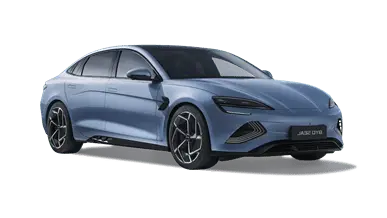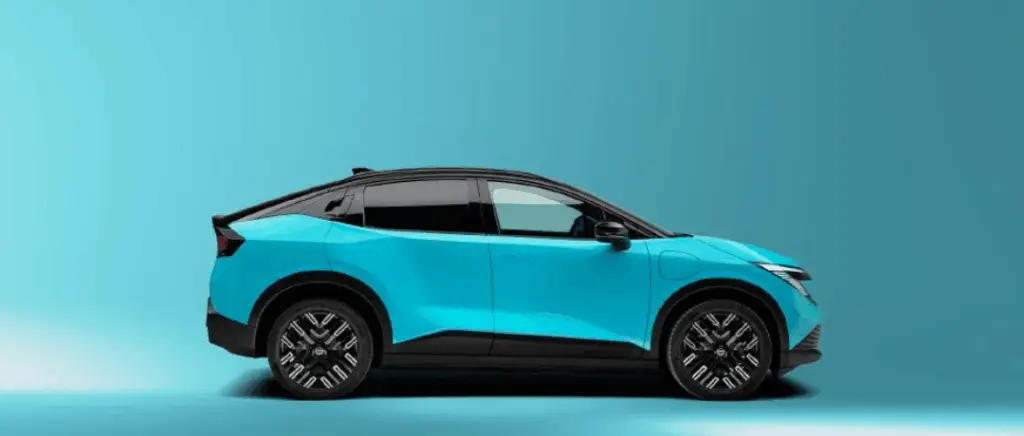BYD Seal vs XPENG G6: which Chinese electric SUV to choose in 2025?
In 2025, the choice between BYD Seal and the XPENG G6 will depend on each driver's priorities. The XPENG G6 boasts cutting-edge technology, including an 800-volt platform for ultra-fast charging, while the BYD Seal offers excellent value for money with solid performance.
Both vehicles represent the cutting edge of the Chinese electric car industry, with modern designs and advanced technologies.
Why compare the BYD Seal and the XPENG G6?
The comparison between these two models is relevant because they represent the offensive by Chinese manufacturers in the market for top-of-the-range electric SUVs. Both vehicles offer impressive performance, innovative technologies and aim to compete directly with established European and American brands.
This comparison enables consumers to understand the strengths and weaknesses of each model in a rapidly expanding segment.
Performance and engines: which SUV offers the best drive?
How powerful and fast are the BYD Seal and XPENG G6?
La BYD Seal and the XPENG G6 both offer impressive performance in terms of power and acceleration. The BYD Seal offers a power range from 313 bhp for the base version to an impressive 530 bhp for the top-of-the-range version. The top-of-the-range version can accelerate from 0 to 100 km/h in just 3.8 seconds, while the base version does the same in 5.9 seconds. The XPENG G6 is no slouch, with power ranging from 258 bhp for the Standard Range version to 476 bhp for the Performance version. The latter, with an impressive 660 Nm of torque, can reach 100 km/h in 4.1 seconds from a standstill. The less powerful versions of the G6 achieve 0-100 km/h in 6.9 and 6.7 seconds respectively for the Standard Range and Long Range versions.
Although the BYD Seal seems to have a slight advantage in terms of maximum power and acceleration for its top-of-the-range version, the XPENG G6 offers a more diverse range of configurations, allowing buyers to choose the level of performance that best suits their needs and preferences.
Which SUV offers the best driving experience and handling?
Comparing the driving experience and handling of the two SUVs, the XPENG G6 seems to have the edge over the BYD Seal. The G6 stands out for its 4-wheel drive configuration in its Performance version, combining a permanent magnet synchronous motor at the rear and an induction motor at the front, for a total output of 476 hp and an impressive 660 Nm of torque. Its 800-volt architecture not only improves motor performance but also recharging power. Handling is enhanced by Michelin Pilot Sport EV tyres mounted on 20-inch wheels, offering excellent grip.
The G6's advanced driver assistance system, including lane change assist and effective heading hold even on the secondary network, as well as its ability to carry out overtaking manoeuvres autonomously and quickly, contribute to a superior driving experience. Road tests revealed no weaknesses in handling or braking, underlining the vehicle's stability and reliability. Although the BYD Seal U offers good performance with power ratings ranging from 218 to 324 bhp, it does not appear to achieve the same level of sophistication in terms of driving experience as the XPENG G6.
Autonomy and recharging: which has the most staying power?
In terms of range and recharging, the XPENG G6 stands out as the more enduring of the two models. The 'Extended Range Powertrain' version of the G6 offers an impressive range of up to 570 km according to the WLTP cycle, thanks to its battery of 87.5 kWh. This range is particularly well-suited to daily urban journeys and long motorway journeys.
The G6 also stands out for its rapid recharging capacity. Equipped with 800-volt technology, it can reach a maximum recharging power of 280 kW for large-battery versions. This means the battery can be recharged from 10 % to 80 % in just 20 minutes at a compatible DC charging point. Even the 'Standard' version of the G6 offers fast charging at 210 kW, maintaining the same 20-minute recharge time from 10 % to 80 %.
By comparison, the BYD Seal offers a maximum charging power of 150 kW, enabling it to go from 10 % to 80 % in around 36 minutes. In terms of range, the BYD Seal offers between 520 and 570 km depending on the version, which is still competitive but slightly less than the XPENG G6.
In conclusion, the XPENG G6 seems to be the more enduring of the two, offering not only excellent range but also ultra-fast recharging capabilities, outperforming the BYD Seal in terms of both recharging speed and overall range.
Design and interior comfort: which model appeals most?
What are the differences between the exterior design of the BYD Seal and the XPENG G6?
The BYD Seal and XPENG G6 take distinct approaches to exterior design, reflecting their respective positioning. The BYD Seal, although a saloon, is distinguished by its elegant design and aerodynamic lines, designed to maximise fuel efficiency. Its sleek, modern silhouette appeals to lovers of refined vehicles.
In contrast, the XPENG G6, a coupé SUV, opts for a more futuristic and dynamic style. Slightly shorter (4,753 mm compared with 4,800 mm for the Seal), it boasts a robust yet sporty silhouette, accentuated by a sloping roof that gives it an elegant coupé look. Its balanced proportions and modern details, such as the distinctive LED headlamps and plunging roofline, reinforce its urban and versatile character.
In short, the BYD Seal focuses on refinement and aerodynamics, while the XPENG G6 favours a bold, sporty look.
What on-board equipment and technologies enhance on-board comfort?
Both models feature top-of-the-range equipment to maximise passenger comfort, but they differ in some key respects. The XPENG G6 excels in this area with heated, ventilated seats equipped with a massage function and electrically adjustable with memory. It also features customisable ambient lighting, a panoramic glass roof for a more spacious feel, and an 18-speaker Xopera audio system delivering 960 watts of power for exceptional sound immersion. The interior is enhanced by premium materials such as extended leather, wood inserts and a microfibre headlining.
For its part, the BYD Seal also offers a comfortable interior with ergonomic seats and quality materials. It incorporates advanced technologies such as a large, intuitive central touchscreen and a modern infotainment system. However, it does not appear to be as well equipped as the G6 in terms of specific comfort-related features.
In conclusion, while both vehicles offer a pleasant on-board environment, the XPENG G6 stands out for its more sophisticated equipment and attention to detail, which enhance the overall passenger experience.
Technologies and innovations : BYD Seal vs XPENG G6
What driver assistance and artificial intelligence systems are integrated?
Both the BYD Seal and the XPENG G6 feature advanced driver assistance and artificial intelligence systems. The BYD Seal is equipped with the DiPilot system, which is available in several versions depending on the model, from the basic DiPilot 100 to the top-of-the-range DiPilot 600 incorporating 3 LiDAR sensors and 600 TOPS of computing power. The latter enables virtually complete automation of driving. The XPENG G6, meanwhile, is equipped with the XPILOT system, offering features such as motorway driving assistance and level 2 autonomous driving capabilities. Both vehicles benefit from remote software updates (OTA) to constantly improve their performance.
What screens, interfaces and connected functions do these two models offer?
In terms of screens and interfaces, the BYD Seal offers a 12.8 or 15.6 inch rotating touchscreen, as well as a 12.3 inch LCD instrument panel. The XPENG G6 goes a step further with a large 14.96-inch central touchscreen and a 10.2-inch driver control screen. Both models offer advanced connectivity, including smartphone integration via Android Auto and Apple CarPlay, as well as command-activated voice assistants ("Hi BYD" for the Seal, "Hey XPENG" for the G6). Connected features allow users to control various vehicle functions remotely via dedicated applications, such as locking/unlocking doors, controlling the air conditioning and checking the battery's state of charge.
The XPENG G6 is distinguished by its Xmart OS operating system, which seamlessly integrates comfort and driver assistance functions to deliver a particularly advanced user experience.

VS

Compare the BYD Seal vs XPENG G6in our electric car comparison tool
Price and value for money: which is more cost-effective?
Which car offers the best compromise between performance, range and budget?
La XPENG G6 starts at €42,990 for the base version equipped with a 66 kWh LFP battery offering a range of 435 km. Prices can rise to €46,990 for the top-of-the-range versions. Despite this relatively high price, the G6 offers a level of comfort and technology comparable to more expensive rivals such as the Tesla Model Y.
BYD Seal starts from 46,990 euros. This competitive starting price puts it in an advantageous position in the electric saloon market, given that BYD electric is known for offering good value for money.
Comparison table: BYD Seal vs XPENG G6
| Features | BYD Seal | XPENG G6 |
|---|---|---|
| Power | 313-530 hp | 258-476 hp |
| Acceleration (0-100 km/h) | 3,8-5,9 s | 4,1-6,9 s |
| Range (WLTP) | 520-570 km | 435-570 km |
| Battery capacity | 84 kWh | 66-87.5 kWh |
| Consumption | 16.6-18.2 kWh/100km | 17.5-17.9 kWh/100km |
| Fast recharge | 10-80% in 36 min (150 kW) | 10-80% in 20 min (280 kW) |
| Maximum speed | 180 km/h | 200 km/h |
| Boot volume | 400 L | 571 L |
| Starting price | 46 990 € | 42 990 € |
| On-board technology | DiPilot (several versions) | XPILOT (level 2 autonomous driving) |
| Main screen | 12.8" or 15.6 | 14,96" |
Verdict: BYD Seal or XPENG G6, which electric SUV should you choose?
In conclusion, the choice between the BYD Seal and the XPENG G6 in 2025 will largely depend on the priorities and specific needs of each driver. The XPENG G6 is positioned as a premium choice, offering superior performance, cutting-edge technology and increased versatility, making it an excellent choice for technophile families and dynamic driving enthusiasts. The BYD Seal, on the other hand, stands out for its elegant design and fuel efficiency, which may appeal to those looking for a more discreet vehicle that is just as capable for everyday use.
Both models reflect the rapid evolution of China's electric car industry, offering serious alternatives to established European and American brands. Whichever you choose, these two electric SUVs promise a modern, eco-friendly and high-performance driving experience, tailored to the demands of the automotive market of 2025.
































